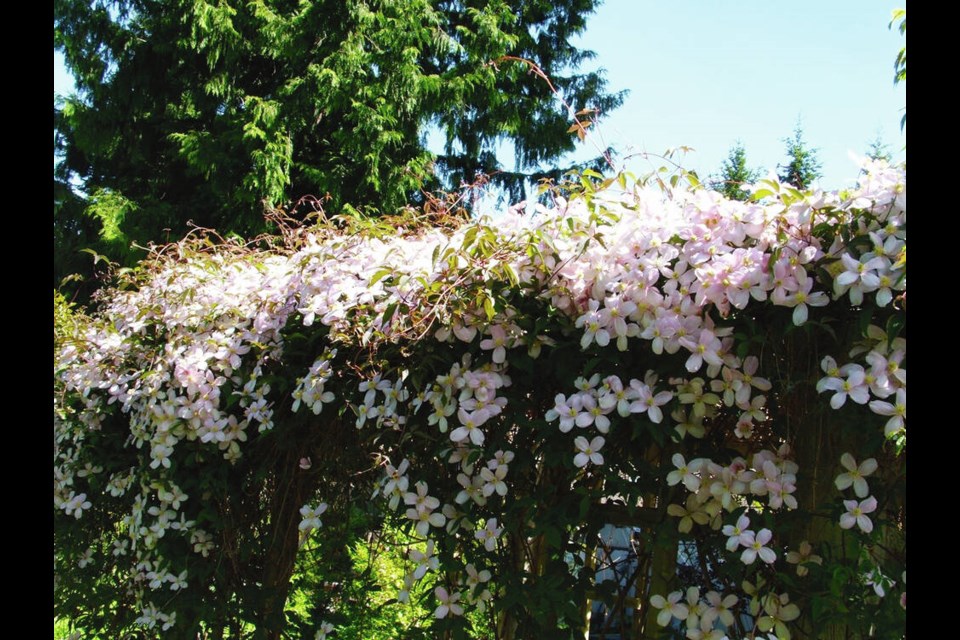In light of recent weather patterns, I’m wondering what sort of conditions for gardening lie ahead as the official beginning of spring draws near.
When the snow fell and temperatures plummeted at the end of February, I had already cleared the leaves away from a small section of a vegetable plot, prepared the soil with compost, lime and fertilizer, and seeded broad beans and corn salad. The corn salad was an experiment, prompted by an old tradition of sowing this delightful leafy green on Ash Wednesday.
The cold, snowy weather, plus a glitch in the electrical workings of my trusty plant lights, caused me to slow the pace of my indoor seeding. I don’t want seedlings to develop past ideal transplant size while I await suitable conditions for planting them out into the garden.
Gardeners live in hope. Now, the focus of that hope is this: May the spring season this year be a giant improvement over the extended cold, wet conditions of last year.
Hope lives. We all probably have plants in our gardens that feed the fires of hope. Two sets of plants in my garden proved wonderfully inspiring last year.
In the centre of the back garden is a simple gazebo-like structure with brick flooring. Years ago, I planted three Clematis montana vines at the foot of its latticework corners. They grew rapidly up the sides and over the top, to form a foamy roof of pink flowers every May.
In the past few years flowering had become increasingly sparse. The oldest stems had turned woody and looked shredded.
One day, early in the summer, when a friend was helping out in the garden, we appraised the flagging clematis vines together. Noting the substantial numbers of rapidly growing new, green shoots among the old, woody ones, I decided to take my own advice on renewing clematis vines: Remove all the old growth, thin the many fresh, young stems to leave the strongest, and begin training them up the structure corners and over the slats across the top.
The new stems should begin producing some bloom in the spring of next year.
The removal and disposal of all the old stems was a big job. I was more than glad to have help. Laurel used her long-handled clippers to quickly chop the stems into fine pieces for speedier decomposition in the compost.
Spring-flowering clematis vines like my C. montana, over the usual course of their lifetimes, are pruned only to remove dead or weak stems. The pruning is done at the end of the flowering period, in May or June.
My summer-flowering clematis vines — the Viticellas and C. texensis ‘Duchess of Albany’ are automatically renewed in the late winter of every year, when the old stems are all cut down close to the ground. These vines flower on the new, current season’s growth.
The other set of plants that managed to resurrect themselves were the hardy fuchsias. For the first time ever in this garden, they temporarily relinquished their status as shrubs to behave as herbaceous perennials, dying to the ground in winter.
The unusual die-back was likely due to the timing and duration of freezing weather in late winter of last year. Generally hardy plants that will withstand hard freezing temperatures in early to mid-winter will be a good deal more vulnerable to damage when the same conditions appear in late winter, as they are easing out of dormancy.
As I accepted that the shrubs had died back, I also noticed each of them had sprouted a mass of fresh, green shoots — just like the clematis vines. Cutting away the old growth and training a selected number of new shoots soon had new shrubs developing.
GARDEN EVENTS
Peninsula meeting. The Peninsula Garden Club will meet on Monday at 7 p.m. in the Mary Winspear Centre in Sidney. Bruce Carter, from Wes-Tech Irrigation, will delve into irrigation techniques and smart watering technologies available to gardeners. The evening will include a parlour show, raffle, refreshments and access to the expertise of Master Gardeners. Non-member drop-in fee $5.
Qualicum meeting. The Qualicum Beach Garden Club will meet on Tuesday at 7:30 p.m. in the QB Civic Centre, 747 Jones St. Jim Roberts and Cyndi Hampton of Streamside Native Plants will speak about the many benefits of choosing native plants for your garden.



